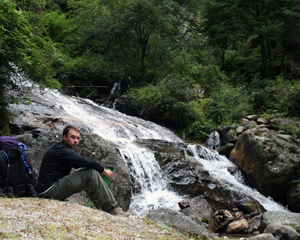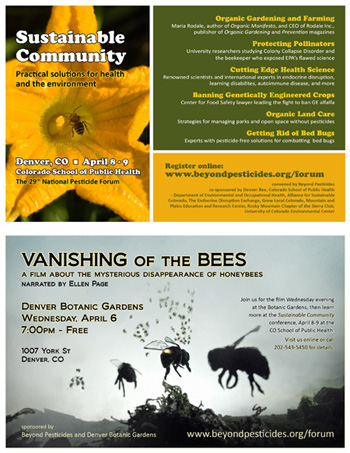(Beyond Pesticides, March 23, 2011) According to the Cornucopia Institute, the United States Department of Agriculture (USDA) has confirmed that it will allow products containing unapproved synthetic additives in processed food labeled “organic” for an indefinite grace period. The National Organic Standards Board (NOSB) is slated to take up the issue at its upcoming meeting in April, when it will determine whether the use of these synthetic materials meets the standards of the Organic Foods Production Act nad its standards of health and environmental protection. Consumers are urged to make their voices heard with comments to the NOSB before the April 10 deadline (see below).
The Cornucopia Institute has filed legal complaints against infant formula manufacturers and Dean Foods, manufacturer of Horizon dairy products, for adding unapproved additives: Martek Biosciences Corporation’s omega-3 and omega-6 fatty acids (DHA/ARA), derived chemically from fermented algae and fungus, to foods with the organic label.
The Cornucopia Institute maintains, and the USDA reiterated in a compliance letter issued March 16, that these additives are illegal in organics. But USDA also stated it would not take enforcement action at this time. The USDA’s compliance letter suggested that it would allow companies to continue adding the additives to organic foods during a phase-out period of unspecified length, despite its clear statement, in the same letter, that the additives were being used in organics due to an “incorrect” interpretation of the federal standards.
“Essentially, the USDA admitted once again in its letter that the DHA additives should never have been allowed in organics, and then goes on to state that they have chosen not to take enforcement action at this time,” said Charlotte Vallaeys, Farm and Food Policy Analyst with The Cornucopia Institute.
According to organic regulations relating to synthetic materials in processed organic foods, “nutrient vitamins and minerals” can be used according to the U.S. Food and Drug Administration’s (FDA) Nutritional Quality Guidelines for Foods. However, the National Organic Program (NOP) has most often interpreted this regulation in a very broad context, which advocates believe runs contrary to the intent of the regulation.
The Wisconsin-based Institute stated that it is meeting with its legal team to determine its next course of action in its efforts to ensure that foods bearing the “USDA Organic” label are produced in accordance with the federal organic standards.
“We hope the current NOP management moves quickly to implement their position, that adding unapproved additives to infant formula constitutes a violation of the organic standards,” said attorney Gary Cox, who has long represented The Cornucopia Institute in its oversight of the USDA. Cornucopia states that it is likely to file a lawsuit against the USDA for its failure to carry out its Congressional-mandated duties in protecting the purity and safety of organic food.
“Federal law clearly states that synthetic additives must be approved by the USDA, through a formal petition process, assuring their safety before they can legally be added to foods with the organic label,” stated Vallaeys. “Martek’s Crypthecodinium cohnii and Schizochytrium oils (sources of DHA) and Mortierella alpina oil (a source of ARA) have never been approved, and the USDA has once again caved to industry lobbyists.”
The Cornucopia Institute is concerned with the USDA’s failure to enforce the organic standards regarding unapproved accessory nutrients, because the synthetic additives have been linked to many serious reported gastrointestinal problems in infants and young children.
Megan Golden of King of Prussia, Pennsylvania, watched her newborn son suffer from serious vomiting and gastrointestinal illness from the day he was born and given formula with DHA and ARA. At age 9 weeks, she switched to formula without these additives, and his symptoms disappeared. “By the next day, no lie, my son was a completely different infant. He was comfortable, was not as agitated, and the throwing up had stopped. His gas pains went away. His stools became normal. And he could finally relax enough to sleep. I am thankful for that,” said Ms. Golden.
As of January 2009, more than a hundred similar adverse reaction reports have been filed with FDA (a more recent open records request by The Cornucopia Institute is pending). Since few parents and healthcare professionals historically report the link between over-the-counter drugs or nutritional additives and adverse reactions to the FDA, scientists believe these reports constitute only the tip of the iceberg.
When USDA enforcement officials first became aware, in 2006, that infant formula manufacturers were adding unapproved additives to formula bearing the “USDA Organic” label, they recognized its illegality and sent an enforcement letter ordering them to take the unapproved additives out of organic infant formula.
Subsequently, discovered through a Freedom of Information Act (FOIA) request by The Cornucopia Institute, and reported in an investigative report by the Washington Post, corporate lobbyists convinced the former director of the USDA’s National Organic Program, Dr. Barbara Robinson, to overrule her staff’s decision, and allow companies to market products with Martek’s unapproved algal-based and fungal-based additives.
The Cornucopia Institute has complained for years that this was an improper and illegal action by the agency. In 2010, the USDA, under the Obama administration, concurred with Cornucopia, stating in a public memorandum that this was an improper decision.
Unlike some essential nutrients (vitamins and minerals), unapproved additives like Martek’s DHA and ARA are not required by the FDA in foods, but are popular with food manufacturers because they are useful in trying to create a competitive marketing advantage.
FDA just announced that it will conduct a study to determine if marketing claims by infant formula manufacturers, such as claims that DHA and ARA “support brain and eye development,” influence mothers’ feeding decisions and discourage breast-feeding.
Marion Nestle, professor of nutrition at New York University and author of Food Politics, states about DHA and ARA in infant formula: “Competition for market share explains why formula companies want to put distinctive nutrients in their formulas—especially nutrients considered ”˜conditional.’ Even if the health benefits are minimal or questionable, they can be used in advertising.”
While they advertise these nutrients with questionable claims of benefits, companies do not share with consumers the process by which these nutrients are manufactured.
“Getting omega-3 fatty acids from natural sources like breast milk, or salmon, or flaxseed, and getting omega-3’s from a synthetic additive in infant formula or milk are two completely different things,” explains Ms. Vallaeys. “Companies like Martek don’t like consumers to know that these additives are often chemically extracted, fermented in genetically engineered feedstock, treated with harsh chemicals, deodorized and bleached. There’s a reason why so many consumers are turning to organic foods””to avoid these kinds of novel substances that masquerade as food,” she adds.
Additives like DHA and ARA are not required by the FDA in foods, including infant formula, because scientific data fails to document benefits to human health or development. Dr. Katherine Kennedy of the University College of London’s Institute of Child Health, along with several colleagues, wrote: “We contend this field of research has been driven to an extent by enthusiasm and vested interest.”
The British scientific panel also stated, “Although the vast majority of infant formulas now contain long-chain polyunsaturated fatty acids [manufactured by Martek], the scientific evidence base for their addition is recognized by most investigators and key opinion leaders in the field to be weak.”
“After the USDA determined these materials were being illegally added to certified organic food, it’s unconscionable that they would continue to drag their feet on enforcement even as more reports flow into the FDA on adverse health impacts,” says Mr. Kastel.
Consumers exhibit marketplace loyalty in the organic label, because it represents a rigorous third-party certification system of strict federal standards that prohibit synthetic inputs unless they have gone through a rigorous approval process. Organic activists are concerned that if the USDA fails to rigorously enforce the standards, allowing big business to make up their own rules, that consumer confidence in the label will be eroded.
Industry observers speculate that the USDA has dragged its feet on forcing the removal of these unapproved additives in order to allow time for the powerful pharmaceutical companies manufacturing infant formula (Abbott Laboratories and PBM Nutritionals, the private-label manufacturer for Wal-Mart and Hain-Celestial’s Earth’s Best brand) and the nation’s largest milk bottler (Dean Foods) to petition the National Organic Standards Board, the expert citizen’s body created by Congress, to approve the Martek materials, after the fact.
“This is more than just a question of whether a particular additive is risky and inappropriate for inclusion in organics,” Kastel lamented. “The question is whether or not organics will remain a trusted last refuge for families who don’t want to experiment with the long-term health of their children.”
On March 14, the National Organic Standards Board released a controversial committee proposal that would allow any synthetic nutrient additive that comes on the market to be added freely to organic foods””without review.
Already, citizens are lining up to voice their disapproval of this industry-friendly committee decision, which will be debated and voted on by the full Board during its next meeting in Seattle, April 26-29.
“It’s unfortunate that the committee, stacked during the Bush Administration with corporate representatives, has voted to open the door to just about any novel synthetic, chemically produced, additive to be added to organic foods””without the congressionally-mandated review,” stated Mr. Kastel.
“While the split vote by the 7-person committee was in favor of potentially marketing gimmicky and risky synthetic additives, the organic community as a whole is going to fight like hell against this,” Mr. Kastel stated. “There is no way that ethical organic companies, organic farmers, and organic consumers are going to allow a handful of pro-corporate board members to indiscriminately weaken the meaning of the organic label.”
A brief summary of the overwhelming scientific literature questioning the efficacy of Martek’s nutritional oils, and questioning their safety, can be found here.
Since the USDA is failing its mandate to ensure that all products bearing the “USDA Organic” seal are in fact complying with the federal standards that prohibit unapproved additives, the Cornucopia Institute has developed a list of products containing Martek’s unapproved additives. The list is available on the Cornucopia website and will be updated on an ongoing basis.
For more information on how you can be involved with the organic regulatory process, see Beyond Pesticides’ Organic Integrity program page.
TAKE ACTION:
Submit your comments to the NOSB regarding nutrient additives, or any other topic that will be debated, by April 10, 2011 in order to have them considered before the meeting. Be sure to specify which issue you are commenting on.
Source: Cornucopia Institute press release























